Tatsuya Kawahara
SONAR: Self-Distilled Continual Pre-training for Domain Adaptive Audio Representation
Sep 19, 2025Abstract:Self-supervised learning (SSL) on large-scale datasets like AudioSet has become the dominant paradigm for audio representation learning. While the continuous influx of new, unlabeled audio presents an opportunity to enrich these static representations, a naive approach is to retrain the model from scratch using all available data. However, this method is computationally prohibitive and discards the valuable knowledge embedded in the previously trained model weights. To address this inefficiency, we propose SONAR (Self-distilled cONtinual pre-training for domain adaptive Audio Representation), a continual pre-training framework built upon BEATs. SONAR effectively adapts to new domains while mitigating catastrophic forgetting by tackling three key challenges: implementing a joint sampling strategy for new and prior data, applying regularization to balance specificity and generality, and dynamically expanding the tokenizer codebook for novel acoustic patterns. Experiments across four distinct domains demonstrate that our method achieves both high adaptability and robust resistance to forgetting.
Triadic Multi-party Voice Activity Projection for Turn-taking in Spoken Dialogue Systems
Jul 10, 2025Abstract:Turn-taking is a fundamental component of spoken dialogue, however conventional studies mostly involve dyadic settings. This work focuses on applying voice activity projection (VAP) to predict upcoming turn-taking in triadic multi-party scenarios. The goal of VAP models is to predict the future voice activity for each speaker utilizing only acoustic data. This is the first study to extend VAP into triadic conversation. We trained multiple models on a Japanese triadic dataset where participants discussed a variety of topics. We found that the VAP trained on triadic conversation outperformed the baseline for all models but that the type of conversation affected the accuracy. This study establishes that VAP can be used for turn-taking in triadic dialogue scenarios. Future work will incorporate this triadic VAP turn-taking model into spoken dialogue systems.
Combining Deterministic Enhanced Conditions with Dual-Streaming Encoding for Diffusion-Based Speech Enhancement
May 20, 2025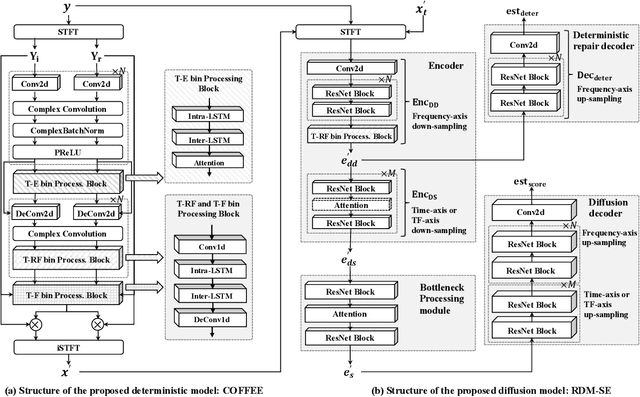
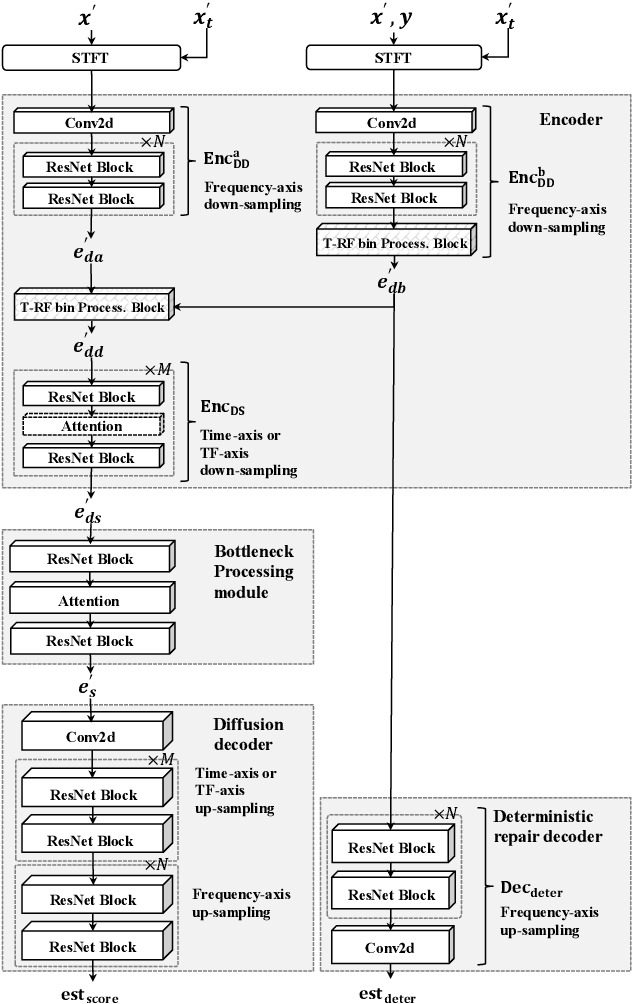
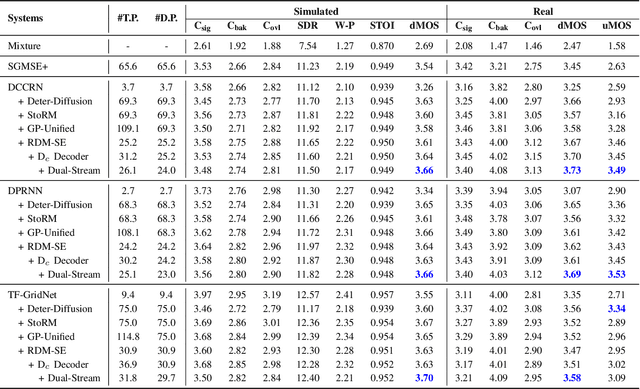
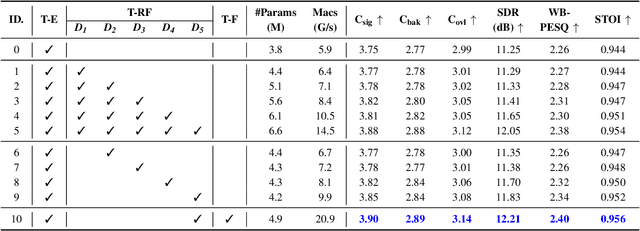
Abstract:Diffusion-based speech enhancement (SE) models need to incorporate correct prior knowledge as reliable conditions to generate accurate predictions. However, providing reliable conditions using noisy features is challenging. One solution is to use features enhanced by deterministic methods as conditions. However, the information distortion and loss caused by deterministic methods might affect the diffusion process. In this paper, we first investigate the effects of using different deterministic SE models as conditions for diffusion. We validate two conditions depending on whether the noisy feature was used as part of the condition: one using only the deterministic feature (deterministic-only), and the other using both deterministic and noisy features (deterministic-noisy). Preliminary investigation found that using deterministic enhanced conditions improves hearing experiences on real data, while the choice between using deterministic-only or deterministic-noisy conditions depends on the deterministic models. Based on these findings, we propose a dual-streaming encoding Repair-Diffusion Model for SE (DERDM-SE) to more effectively utilize both conditions. Moreover, we found that fine-grained deterministic models have greater potential in objective evaluation metrics, while UNet-based deterministic models provide more stable diffusion performance. Therefore, in the DERDM-SE, we propose a deterministic model that combines coarse- and fine-grained processing. Experimental results on CHiME4 show that the proposed models effectively leverage deterministic models to achieve better SE evaluation scores, along with more stable performance compared to other diffusion-based SE models.
Bridging Speech Emotion Recognition and Personality: Dataset and Temporal Interaction Condition Network
May 20, 2025Abstract:This study investigates the interaction between personality traits and emotional expression, exploring how personality information can improve speech emotion recognition (SER). We collected personality annotation for the IEMOCAP dataset, and the statistical analysis identified significant correlations between personality traits and emotional expressions. To extract finegrained personality features, we propose a temporal interaction condition network (TICN), in which personality features are integrated with Hubert-based acoustic features for SER. Experiments show that incorporating ground-truth personality traits significantly enhances valence recognition, improving the concordance correlation coefficient (CCC) from 0.698 to 0.785 compared to the baseline without personality information. For practical applications in dialogue systems where personality information about the user is unavailable, we develop a front-end module of automatic personality recognition. Using these automatically predicted traits as inputs to our proposed TICN model, we achieve a CCC of 0.776 for valence recognition, representing an 11.17% relative improvement over the baseline. These findings confirm the effectiveness of personality-aware SER and provide a solid foundation for further exploration in personality-aware speech processing applications.
Does the Appearance of Autonomous Conversational Robots Affect User Spoken Behaviors in Real-World Conference Interactions?
Mar 17, 2025Abstract:We investigate the impact of robot appearance on users' spoken behavior during real-world interactions by comparing a human-like android, ERICA, with a less anthropomorphic humanoid, TELECO. Analyzing data from 42 participants at SIGDIAL 2024, we extracted linguistic features such as disfluencies and syntactic complexity from conversation transcripts. The results showed moderate effect sizes, suggesting that participants produced fewer disfluencies and employed more complex syntax when interacting with ERICA. Further analysis involving training classification models like Na\"ive Bayes, which achieved an F1-score of 71.60\%, and conducting feature importance analysis, highlighted the significant role of disfluencies and syntactic complexity in interactions with robots of varying human-like appearances. Discussing these findings within the frameworks of cognitive load and Communication Accommodation Theory, we conclude that designing robots to elicit more structured and fluent user speech can enhance their communicative alignment with humans.
A Noise-Robust Turn-Taking System for Real-World Dialogue Robots: A Field Experiment
Mar 08, 2025Abstract:Turn-taking is a crucial aspect of human-robot interaction, directly influencing conversational fluidity and user engagement. While previous research has explored turn-taking models in controlled environments, their robustness in real-world settings remains underexplored. In this study, we propose a noise-robust voice activity projection (VAP) model, based on a Transformer architecture, to enhance real-time turn-taking in dialogue robots. To evaluate the effectiveness of the proposed system, we conducted a field experiment in a shopping mall, comparing the VAP system with a conventional cloud-based speech recognition system. Our analysis covered both subjective user evaluations and objective behavioral analysis. The results showed that the proposed system significantly reduced response latency, leading to a more natural conversation where both the robot and users responded faster. The subjective evaluations suggested that faster responses contribute to a better interaction experience.
An LLM Benchmark for Addressee Recognition in Multi-modal Multi-party Dialogue
Jan 28, 2025Abstract:Handling multi-party dialogues represents a significant step for advancing spoken dialogue systems, necessitating the development of tasks specific to multi-party interactions. To address this challenge, we are constructing a multi-modal multi-party dialogue corpus of triadic (three-participant) discussions. This paper focuses on the task of addressee recognition, identifying who is being addressed to take the next turn, a critical component unique to multi-party dialogue systems. A subset of the corpus was annotated with addressee information, revealing that explicit addressees are indicated in approximately 20% of conversational turns. To evaluate the task's complexity, we benchmarked the performance of a large language model (GPT-4o) on addressee recognition. The results showed that GPT-4o achieved an accuracy only marginally above chance, underscoring the challenges of addressee recognition in multi-party dialogue. These findings highlight the need for further research to enhance the capabilities of large language models in understanding and navigating the intricacies of multi-party conversational dynamics.
Why Do We Laugh? Annotation and Taxonomy Generation for Laughable Contexts in Spontaneous Text Conversation
Jan 28, 2025Abstract:Laughter serves as a multifaceted communicative signal in human interaction, yet its identification within dialogue presents a significant challenge for conversational AI systems. This study addresses this challenge by annotating laughable contexts in Japanese spontaneous text conversation data and developing a taxonomy to classify the underlying reasons for such contexts. Initially, multiple annotators manually labeled laughable contexts using a binary decision (laughable or non-laughable). Subsequently, an LLM was used to generate explanations for the binary annotations of laughable contexts, which were then categorized into a taxonomy comprising ten categories, including "Empathy and Affinity" and "Humor and Surprise," highlighting the diverse range of laughter-inducing scenarios. The study also evaluated GPT-4's performance in recognizing the majority labels of laughable contexts, achieving an F1 score of 43.14%. These findings contribute to the advancement of conversational AI by establishing a foundation for more nuanced recognition and generation of laughter, ultimately fostering more natural and engaging human-AI interactions.
Human-Like Embodied AI Interviewer: Employing Android ERICA in Real International Conference
Dec 13, 2024Abstract:This paper introduces the human-like embodied AI interviewer which integrates android robots equipped with advanced conversational capabilities, including attentive listening, conversational repairs, and user fluency adaptation. Moreover, it can analyze and present results post-interview. We conducted a real-world case study at SIGDIAL 2024 with 42 participants, of whom 69% reported positive experiences. This study demonstrated the system's effectiveness in conducting interviews just like a human and marked the first employment of such a system at an international conference. The demonstration video is available at https://youtu.be/jCuw9g99KuE.
Yeah, Un, Oh: Continuous and Real-time Backchannel Prediction with Fine-tuning of Voice Activity Projection
Oct 21, 2024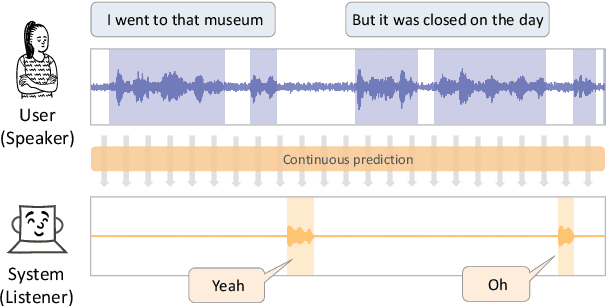
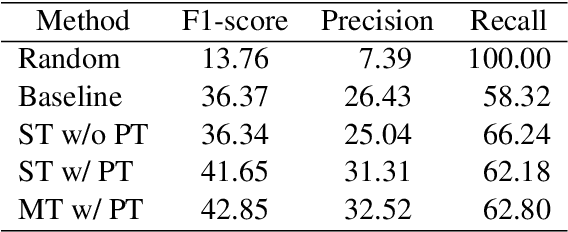
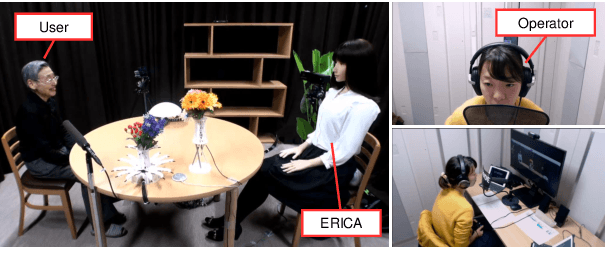
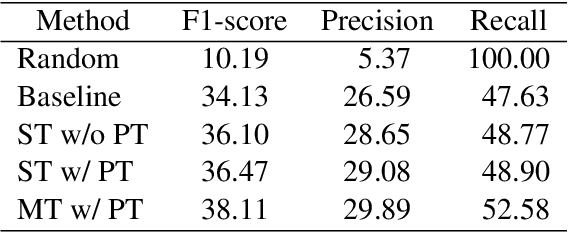
Abstract:In human conversations, short backchannel utterances such as "yeah" and "oh" play a crucial role in facilitating smooth and engaging dialogue. These backchannels signal attentiveness and understanding without interrupting the speaker, making their accurate prediction essential for creating more natural conversational agents. This paper proposes a novel method for real-time, continuous backchannel prediction using a fine-tuned Voice Activity Projection (VAP) model. While existing approaches have relied on turn-based or artificially balanced datasets, our approach predicts both the timing and type of backchannels in a continuous and frame-wise manner on unbalanced, real-world datasets. We first pre-train the VAP model on a general dialogue corpus to capture conversational dynamics and then fine-tune it on a specialized dataset focused on backchannel behavior. Experimental results demonstrate that our model outperforms baseline methods in both timing and type prediction tasks, achieving robust performance in real-time environments. This research offers a promising step toward more responsive and human-like dialogue systems, with implications for interactive spoken dialogue applications such as virtual assistants and robots.
 Add to Chrome
Add to Chrome Add to Firefox
Add to Firefox Add to Edge
Add to Edge